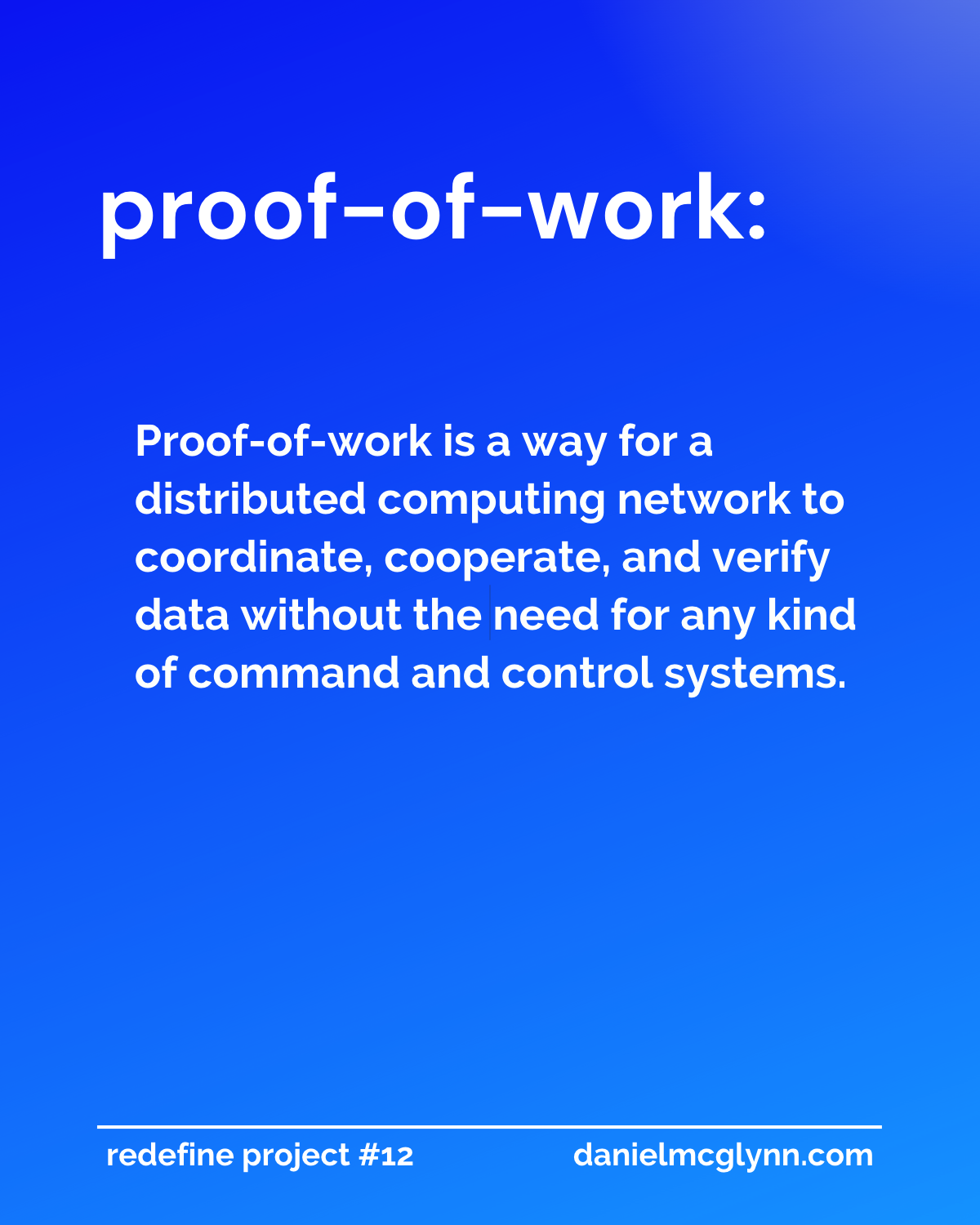Proof-of-work is a means for a computer network to organize and cooperate in a distributed system and in a way that doesn’t require trust.
When a system is decentralized, there aren’t any guards at the gate making decisions about what goes in and what goes out. A gate (or an on/off switch) implies a kind of top-down control, or the need for a trusted third party to make decisions and enforce rules.

With decentralized systems, the rule keeping (in crypto this is called governance) is passed to the network participants. Rather than a single gate (or on/off switch) there are many — the entire network plays a role in moving things forward and making decisions.
But how?
This is where things get interesting. In order for a dynamic network to continue moving, growing, and in the case of crypto networks — finalizing and settling transactions — there has to be a different means of coordination and cooperation.
This is where consensus algorithms come in. In a decentralized network, consensus algorithms make it possible for certain kinds of network nodes to confirm transactions without a need for trust or blind authority.
Proof-of-work as an innovation was in development for decades by computer scientists, but really found its first real world application at scale when the Bitcoin Network launched in 2009.
In proof-of-work, specialized network nodes called miners dedicate computing power to help validate Bitcoin Network transaction deals and package those details into a block of data.
In the case of Bitcoin, new blocks of collected and confirmed transactions are created every 10 minutes. The blocks are chained together to create an immutable record — a digital ledger also known as a blockchain.
Proof-of-work, while acknowledged as an extremely secure means of maintaining a decentralized network, requires a tremendous amount of computational power. Computing power means electricity.
The high energy demands make proof-of-work controversial. It also means that there are other forms of competing consensus mechanisms. In 2022, the Ethereum Network switched from proof-of-work to proof-of-stake, which relies on a system of validators to confirm and finalize transactions.